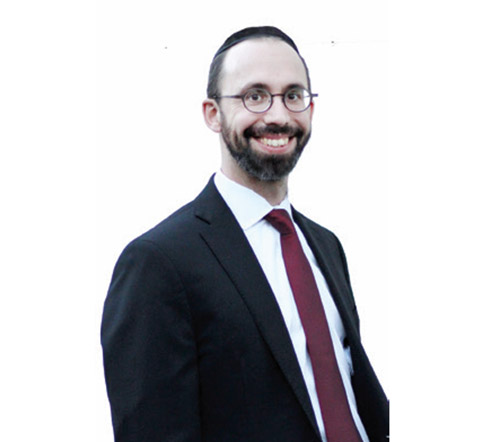
Young children enjoy standing in front of mirrors and making funny faces. Why? Because the funny expressions stare right back at them! On a deeper level, a person’s facial expression speaks volumes about his or her life. And it’s fascinating that the Torah uses the word “faces” to describe the show bread—Lechem Hapanim—the “bread of faces.” We know the bread did not look like an emoji, so why is it called faces?
An answer may emerge from the discussion in the Torah about the Lechem Hapanim. At the end of Parshas Emor there is a very strange episode. A Jewish man “went out” and committed blasphemy. The verse tells us he went out, but it doesn’t say from where. Rashi brings two opinions. Rebbe Levi says he left his world. Rebbe Brachya says he left the topic that was just discussed in the prior paragraph, which was the service for the Lechem Hapanim. Fresh-baked bread would be placed on the Shulchan (table) in the Mishkan every Shabbos. The bread would remain there for a full week. The following Shabbos, the week-old bread would be replaced with the fresh-baked bread and the old bread would be eaten by the kohanim. The blasphemer mocked this procedure, challenging the whole idea by asking, “Would a king give week-old bread to his priests?”
This challenge is puzzling, since the Gemara relates that miraculously the week-old bread was as fresh as the new bread replacing it. In fact, the Ritva says the old bread was so hot, it was steaming! Further, during the busy Yom Tov period the kohanim would hold up the old Lechem Hapanim to highlight the miracle, demonstrating how much Hashem loves llal Yisrael.
The Gerrer Rebbe comments that the name Lechem Hapanim is quite fascinating. The exact translation is “bread of faces.” Simply put, the bread was baked in a very interesting shape; it was curved on both ends, so the ends faced each other as if the bread had two faces. The significance of the two faces of the Lechem Hapanim relates to the quality of this bread. Just like a mirror reflects the face looking at it—whether it’s happy, sad, angry or glad—the Lechem Hapanim was a reflection of the face of the person looking at it. If someone approached the Lechem Hapanim with a cold attitude, then to him it actually looked old. If he approached with a warm attitude, however, then it appeared fresh and warm. This blasphemer was actually saying the truth: the bread looked old and stale to him. However, the issue of the staleness was not with the bread, but with the person approaching the bread.
Based on this new insight, the two explanations of Rebbe Levi and Rebbe Brachya are two sides of a single coin. This blasphemer left his world in the sense that he left the natural world of happiness and warmth, to enter a world that is stale and cold. This explains why the miracle of Lechem Hapanim was specifically displayed during Yom Tov to all Jews. The terminology the Gemara uses is “to display their love,” i.e., to show how much they love Hashem. It was a barometer for each person. The perceived quality and freshness of the bread reflected their individual attitudes toward Hashem.
Remember also: the Lechem Hapanim was placed on the Shulchan in the Mishkan, which symbolized the livelihood of man, since bread is a basic staple of life. I believe the “two-faced bread” reflected one’s attitude to Hashem and guided our perception of how Hashem is providing for our livelihood. Hashem is the infinite Giver and loves us more than we love ourselves. Sometimes we can be struggling painfully and we may think Hashem is unhappy with us. Really, we need to adjust our perception. It’s more likely that it’s we who are not happy with Hashem. Even when we are experiencing great challenges Hashem loves us immensely. By recalibrating our perspective to a natural state of love and appreciation for Hashem we will be able to see, even in our negative experiences, the reflection of how much Hashem loves us and how each of our experiences is truly a blessing.
By Rabbi Baruch Bodenheim
Rabbi Baruch Bodenheim is the associate rosh yeshiva of Passaic Torah Institute (PTI)/Yeshiva Ner Boruch. PTI has attracted people from all over northern New Jersey, including Teaneck, Bergenfield, Paramus, Rockaway and Fair Lawn. He initiated and continues to lead a multi-level Gemara learning program. Recently he has spread out beyond PTI to begin a weekly beis midrash program with in-depth chavrusa learning in Livingston and Springfield. This year he joined Heichal Hatorah in Teaneck as a Gemara iyun rebbe. His email is rb@ptiweb.org.








